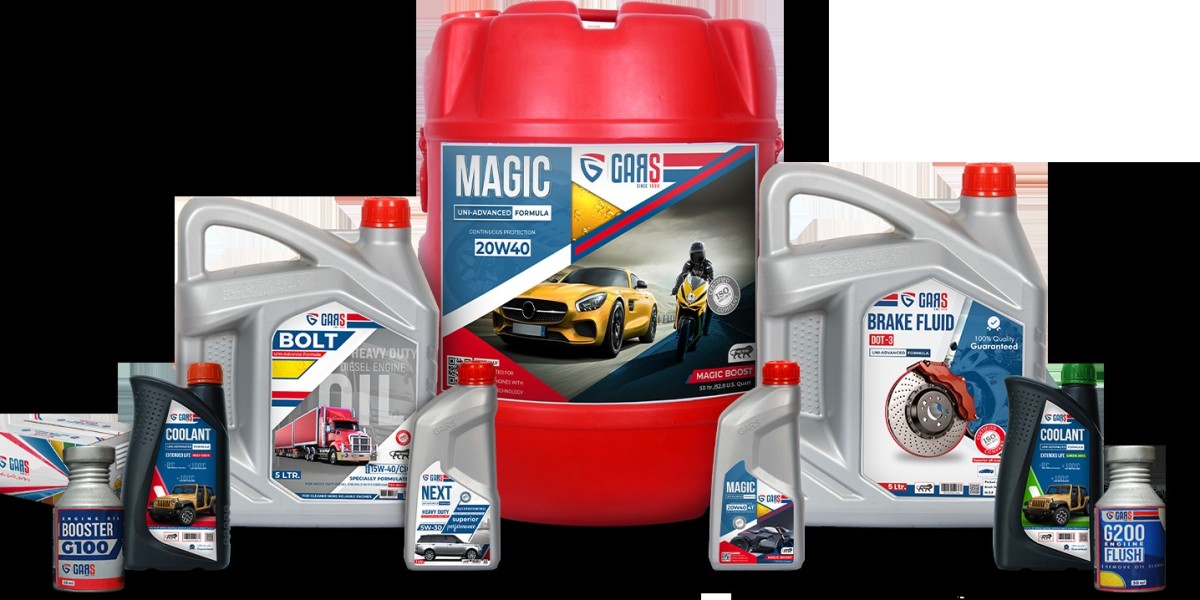Automotive lubricants play a vital role in the performance and longevity of vehicles. Whether it's a car, truck, or motorcycle, every engine relies on lubrication to function properly. Without it, engines would quickly wear out due to excessive friction and heat. This blog will explore what automotive lubricants are, their types, their functions, and why regular maintenance is essential for vehicle health.
Understanding automotive lubricants is important not only for mechanics but also for everyday drivers. Making informed choices about the lubricants used in a vehicle can improve efficiency, reduce repair costs, and extend engine life. Let’s take a closer look at the world of automotive lubricants.
What Are Automotive Lubricants?
Automotive lubricants are specially formulated oils and greases used to reduce friction between moving parts in vehicles. They are essential for smooth operation, preventing metal-to-metal contact inside the engine and other vehicle systems. Besides reducing friction, lubricants also help with heat dissipation, corrosion prevention, and keeping components clean.
The most common form of lubricant in vehicles is engine oil. However, automotive lubricants also include transmission fluids, brake fluids, gear oils, and greases—each designed for specific components and functions.
Types of Automotive Lubricants
Understanding the different types of automotive lubricants is crucial for proper vehicle maintenance. Here are the main categories:
1. Engine Oil
Engine oil is the most widely used lubricant in vehicles. It protects the engine's internal components by reducing friction and heat. There are several types of engine oils:
Conventional Oil: Derived from crude oil and typically used in older engines.
Synthetic Oil: Chemically engineered for better performance and stability at extreme temperatures.
Semi-Synthetic Oil: A blend of conventional and synthetic oils, offering a balance of cost and performance.
High-Mileage Oil: Designed for vehicles with over 75,000 miles, helping reduce oil consumption and leaks.
2. Transmission Fluid
This lubricant is used in both manual and automatic transmissions. It enables smooth gear shifting, cools the transmission system, and protects against wear.
3. Gear Oil
Gear oil is a thicker lubricant used in differentials and manual gearboxes. It withstands high pressure and prevents wear in heavily loaded gear systems.
4. Brake Fluid
Although not a traditional lubricant, brake fluid plays a critical role in hydraulic braking systems. It ensures effective force transfer from the brake pedal to the wheel.
5. Grease
Grease is a solid or semi-solid lubricant used in parts such as wheel bearings, suspension joints, and steering components. It stays in place and provides long-lasting protection. Leading lubricant oil manufacturers are constantly innovating to meet the evolving needs of the automotive and industrial sectors.
Functions of Automotive Lubricants
Automotive lubricants serve several important functions that contribute to vehicle reliability and performance:
1. Friction Reduction
The primary job of a lubricant is to reduce friction between moving parts. This prevents overheating and excessive wear.
2. Cooling
Lubricants help absorb and carry away the heat generated during engine operation, protecting components from damage.
3. Cleaning
Lubricants carry away dirt, metal particles, and other contaminants, keeping engine parts clean. This function is especially important for engine oil, which traps these particles in the oil filter.
4. Sealing
In engines, lubricants can help form seals between parts, such as piston rings and cylinder walls, to maintain compression and prevent leakage.
5. Corrosion Prevention
Lubricants contain additives that protect engine parts from rust and corrosion caused by moisture and combustion byproducts.
Importance of Choosing the Right Lubricant
Using the correct automotive lubricant is essential for optimal vehicle performance. Each vehicle has specific requirements based on its engine design, age, and operating conditions. Using the wrong lubricant can lead to poor engine performance, increased wear, or even failure.
Always refer to the vehicle’s owner manual for recommended lubricant types and service intervals. High-quality lubricants from trusted manufacturers ensure better protection and longer intervals between changes.
When to Change Automotive Lubricants
Regular maintenance is key to extending a vehicle’s lifespan. Over time, lubricants break down and lose their effectiveness. Contaminants also build up, making the lubricant less capable of protecting the engine.
Here are some general guidelines:
Engine oil: Change every 5,000 to 10,000 kilometers, depending on oil type and driving conditions.
Transmission fluid: Replace every 40,000 to 100,000 kilometers.
Brake fluid: Change every two years or as recommended.
Gear oil and grease: Check and replace during routine servicing or as advised by the manufacturer.
Conclusion
Automotive lubricants are a critical part of vehicle maintenance and performance. From engine oil to brake fluid, each type of lubricant serves a specific purpose in keeping your vehicle running smoothly and efficiently. Understanding their functions and following a regular maintenance schedule can lead to better fuel economy, fewer repairs, and a longer-lasting engine.
Choosing the right automotive lubricants and replacing them at the proper intervals is one of the simplest yet most effective ways to care for your vehicle. Always rely on trusted brands and adhere to the manufacturer’s recommendations for the best results.








